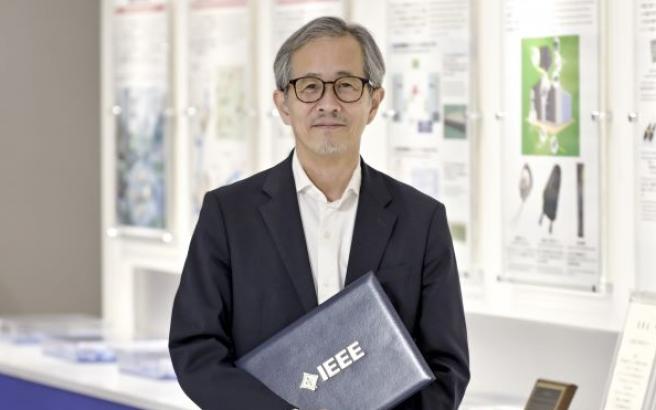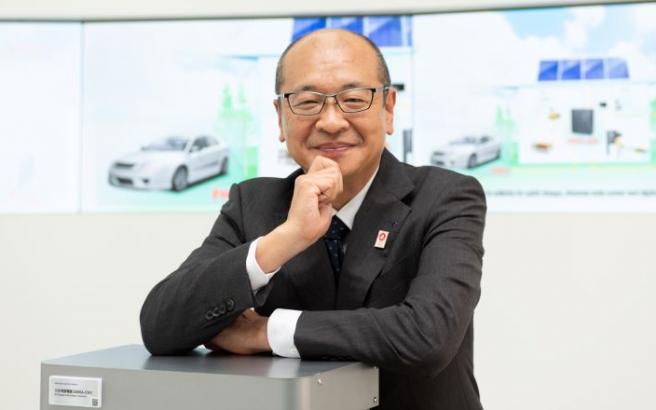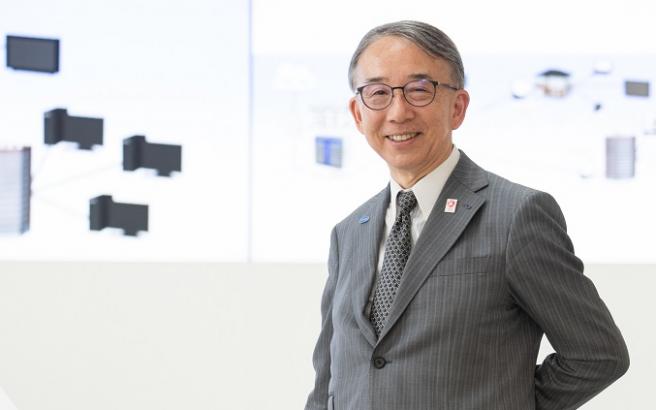Pioneering 5G Millimeter-Wave Communication for the Future of Automobiles
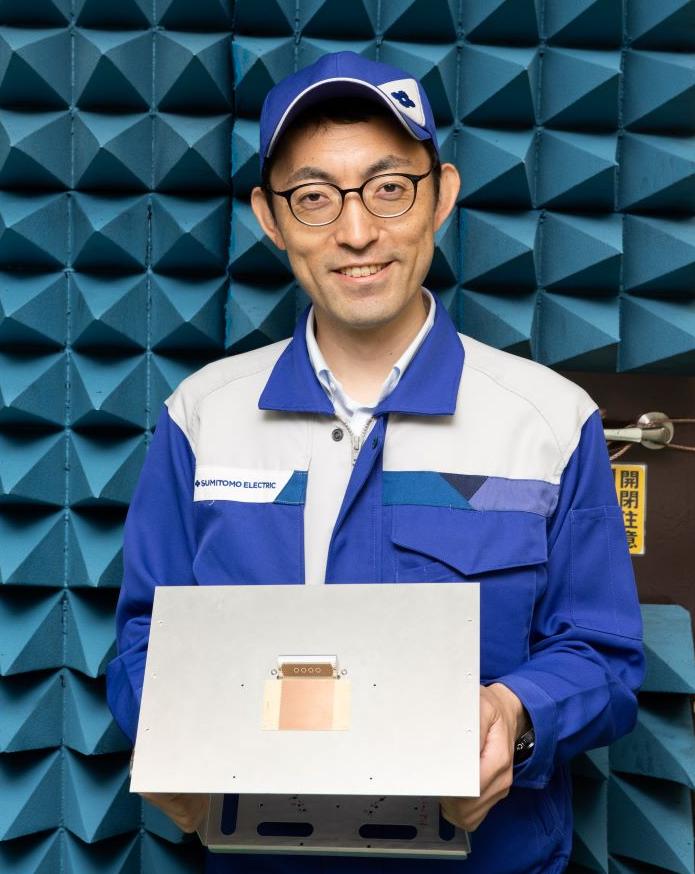
Automotive Antenna Using Metamaterial Technology Suitable for 5G mmWave Communication
Yutaro Miki
Assistant General Manager, AutoNetworks Technologies, Ltd.
Today, vehicles have evolved beyond mere means of transport; they are often referred to as smartphones on wheels, equipped with advanced communication capabilities. My research focuses on 5G millimeter-wave technology that underpins future advancements in automotive functions such as autonomous driving and high-speed data transmission. I have particularly focused on developing advanced 5G millimeter-wave antennas installed in vehicles. These antennas are designed to minimize disruptions in radio wave radiation characteristics, enabling broader 5G coverage and facilitating the transition to fully autonomous vehicles.
Breaking Through Communication Limits with Advanced Antenna Design
Communication technology in the automotive industry is entering a new phase. Currently, many vehicles are equipped with 4G (long-term evolution, LTE) communication devices, which provide sufficient functionality for everyday driving assistance. However, they have limitations when it comes to supporting advanced features such as autonomous driving. Consequently, there is an anticipated shift towards implementing faster and more reliable 5G technology. In particular, utilizing the 28 GHz band, known as millimeter wave (mmWave), will enable simultaneous connections, low latency, and high-capacity data transmission, potentially bringing significant innovations to vehicle functionality.
However, bringing 5G millimeter-wave (mmWave) communication to the automotive domain involves several technical hurdles. In particular, automotive antennas face significant issues due to the short wavelength and disruptions in radiation characteristics caused by antenna placement. To address these challenges, we have developed a high-performance 5G mmWave antenna using metamaterial technology. While the term "metamaterial" may suggest the use of new materials, it actually refers to a unique phenomenon in which the antenna's performance is significantly enhanced by periodically arranging approximately 1.5 mm metallic patterns around the antenna on a printed circuit board.
By applying this phenomenon, we have successfully minimized disruptions in radiation characteristics, enabling stable 5G communication over a wide area regardless of the vehicle’s orientation.
In addition to evaluating the antenna’s standalone performance, we also conduct comprehensive testing of its functionality when integrated into a vehicle’s communication system. By mounting the antenna on a turntable in our anechoic chamber and rotating it, we simulate the scenario of a vehicle equipped with a 5G millimeter-wave antenna communicating with a base station while in motion. This testing uses 5G signals to replicate real-world conditions, with the goal of improving communication quality and advancing system development. (Detailed findings from this evaluation are reported in SUMITOMO ELECTRIC REVIEW, No. 99).
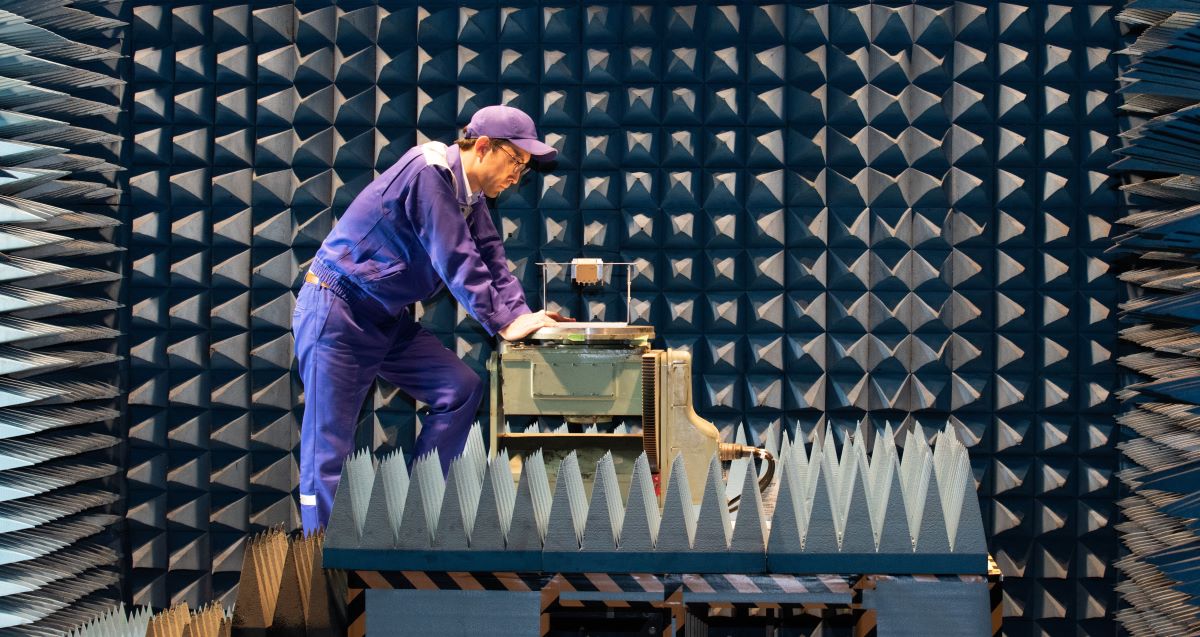
Inside an anechoic chamber shielded from all external signals
Unlocking the Future of Automotive Antennas
Driver-assistance features are already available in many vehicles today, but achieving fully autonomous driving—where cars operate safely without any human intervention—still requires major technological breakthroughs. Imagine a future where you can hold a video conference while your car autonomously navigates to your destination. To make that possible, vehicles will need more than just onboard sensors. They must also integrate cloud-based 3D maps and real-time data from roadside sensors to make intelligent driving decisions.
This kind of data-intensive operation calls for ultra-fast and low-latency communication. This is where 5G millimeter-wave technology comes into play. While infrastructure challenges remain, such as expanding base station coverage and communication networks, once these foundations are in place, the future of truly autonomous mobility will be within reach.
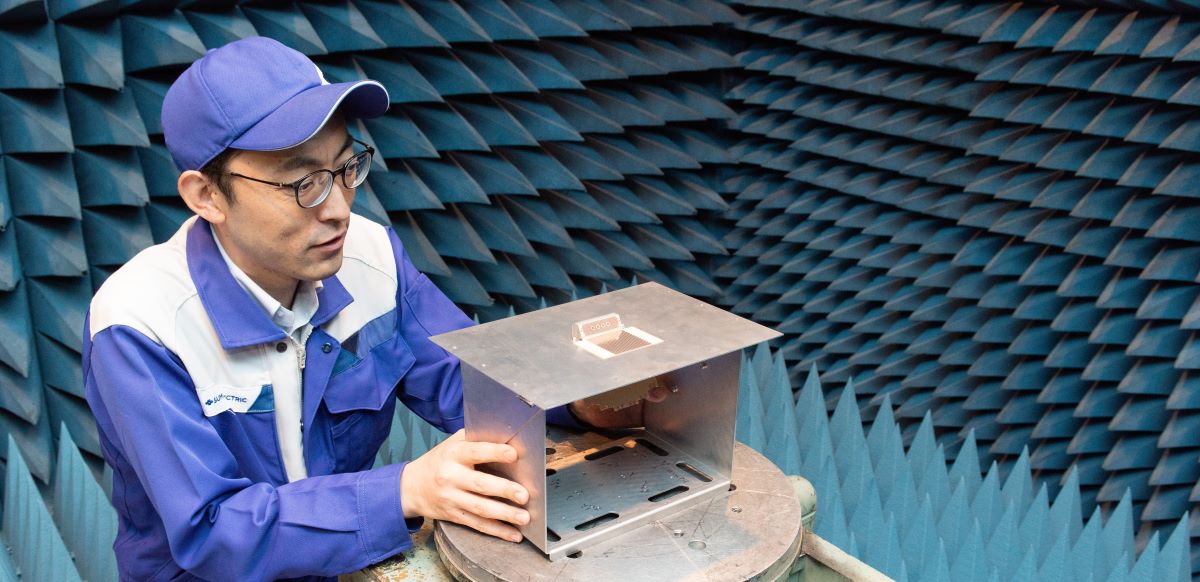
Setting a precise stage for communication performance testing
What Drives Me as an Engineer
What excites me most about research and development is the process of solving challenges one by one. Although antennas are physically located at the edge of wireless systems, they play a critical role as the gateway for signals entering and leaving the vehicle. Even the most advanced modules or amplifiers cannot function effectively without them. Since antenna performance can be a key differentiator in hardware, we work closely with the materials development team to accumulate both expertise and innovation.
Our team, as part of the fundamental research division, provides technical support across a wide range of high-frequency technologies at AutoNetworks Technologies, Ltd. This includes solving complex issues such as identifying the mechanisms of electromagnetic noise emitted from wiring harnesses. Moving forward, I hope to continue contributing to the advancement of automotive and societal communication infrastructure by tackling each technical challenge with dedication and curiosity.
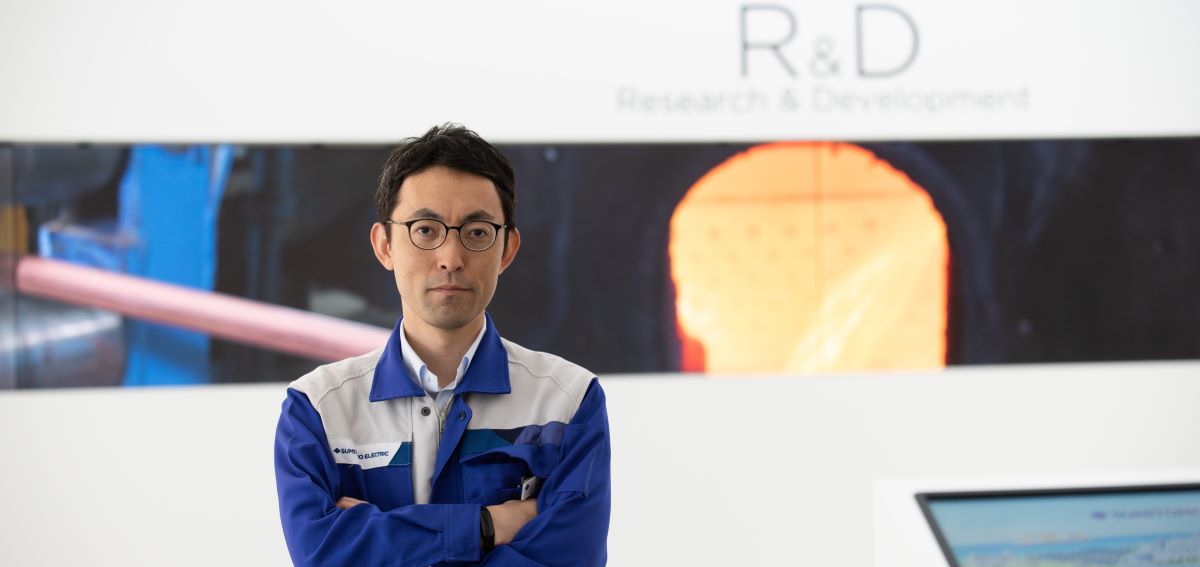
Related Information
[Paper] Miki et al., "Dynamic Evaluation of Beamforming and Communication Performance of In-Vehicle 5G Millimeter-Wave Array Antenna," SUMITOMO ELECTRIC TECHINICAL REVIEW 2024, Vol. 99, 7-11
[Paper] Igarashi et al., "Clarification of the Mechanism of Unintentional Radiated Emissions from Twisted Pair Cable," SUMITOMO ELECTRIC TECHINICAL REVIEW 2024, Vol. 98, 83-88
[Paper] Yamagishi, "Study on Millimeter-Wave Printed Circuit Board Antennas." IEICE Technical Report AP2022-20 (June 2022).
[Products] Fluororesin FPC FLUOROCUITTM
SUMITOMO ELECTRIC TECHNICAL REVIEW
A journal of technical papers explaining the Sumitomo Electric’s technologies. Technical papers are available in PDF format.
Learn more